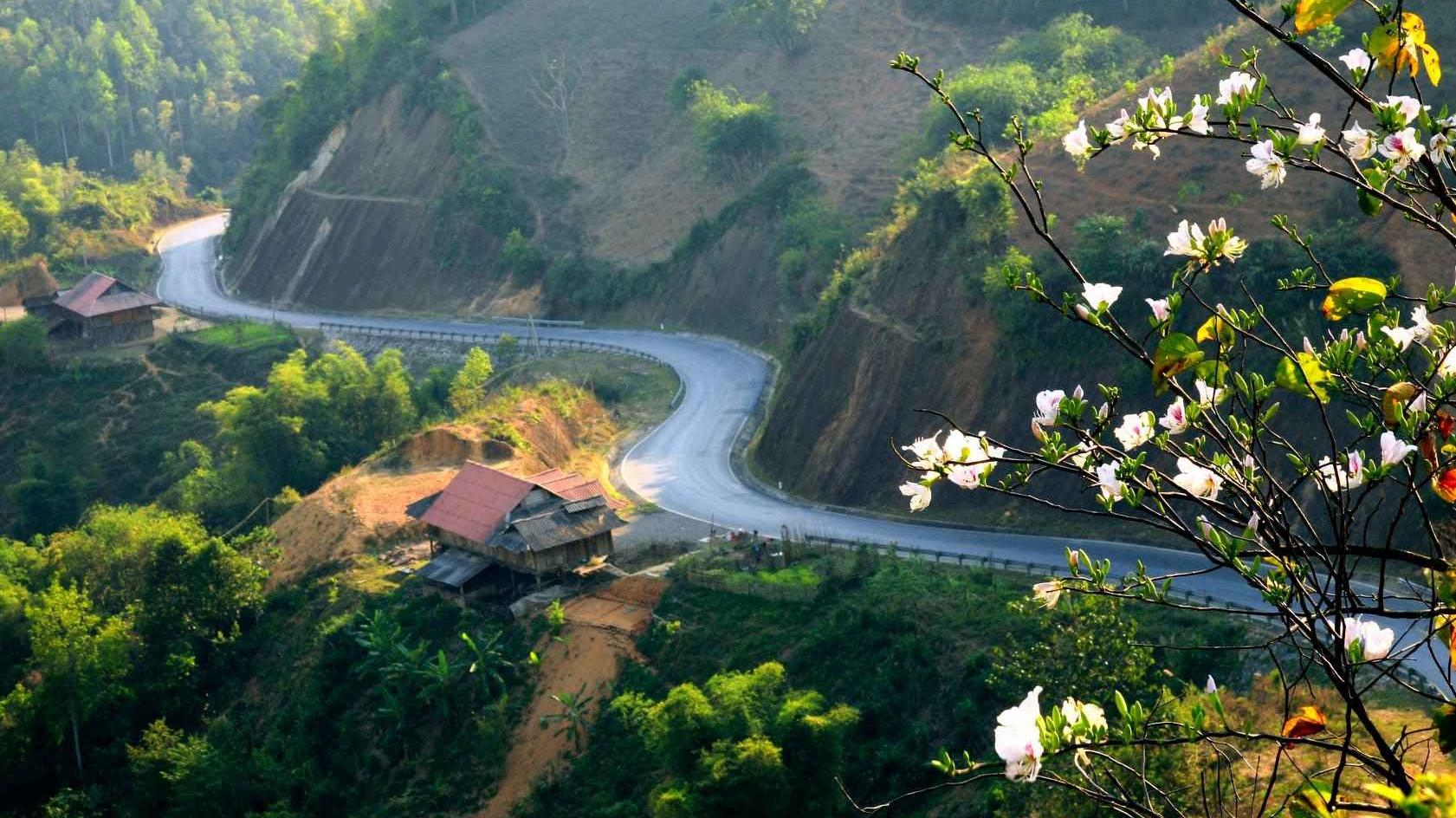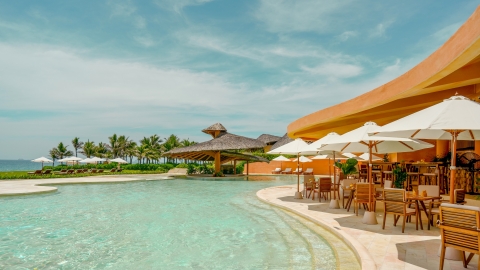Dien Bien not only has historical sites
Dien Bien is a mountainous province in the Northwest region of Vietnam, bordering Lai Chau and Son La provinces. This place is loved by travel enthusiasts because of its dangerous roads and challenging journeys. In each season or any time of the year, Dien Bien wears a different color.
Dien Bien is only vaguely visible somewhere on the Vietnamese tourist map and almost everyone only knows about the historical relics associated with the victory that "resounded throughout the five continents and shook the world" in 1954. Few people know that, besides the historical relics or the westernmost point of A Pa Chai, Dien Bien is a wild land in the true sense of the word.
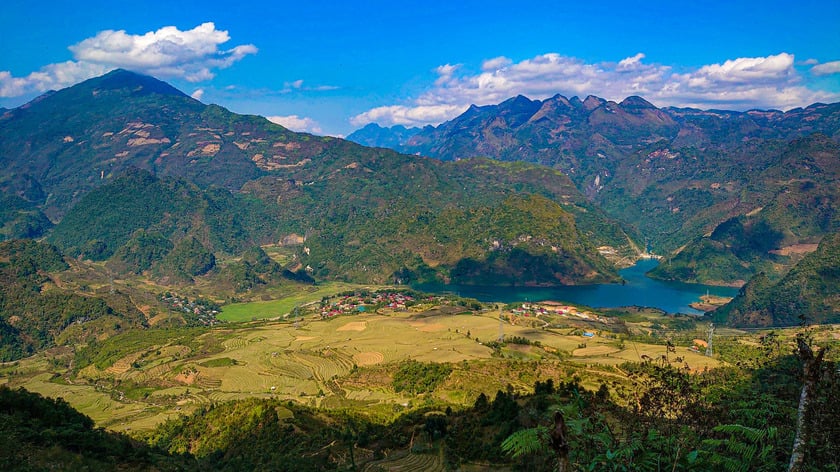
Dien Bien is a mountainous region in the Northwest, so the climate is cool all year round, suitable for exploring the sights, so you can come here any season of the year.
There are 19 ethnic groups living together with colorful traditional costumes, peaceful villages on the mountainside, and the Da River is as beautiful as a watercolor painting, both evocative and lyrical.
The Da River is not as red as the Red River, nor does it have the “green color of mussel soup” like the Lo River or the Gam River. In spring, the Da River is emerald green, in autumn it is “slowly red like the face of a drunkard” and “dyed its banks as wild as prehistoric banks, its banks as innocent as ancient fairy tales” – excerpt from “The Ferryman of the Da River” by Nguyen Tuan.
The rivers are like that, and the mountains are the Tua Chua rocky plateau as beautiful as a fairyland that nature has favored with tea gardens that truly resemble ancient trees located at an altitude of over 1,200 m above sea level. Muong Cha with majestic high mountain ranges and diverse colors of ethnic minorities, Dien Bien Dong is wild with clouds surrounding the mountains all year round.
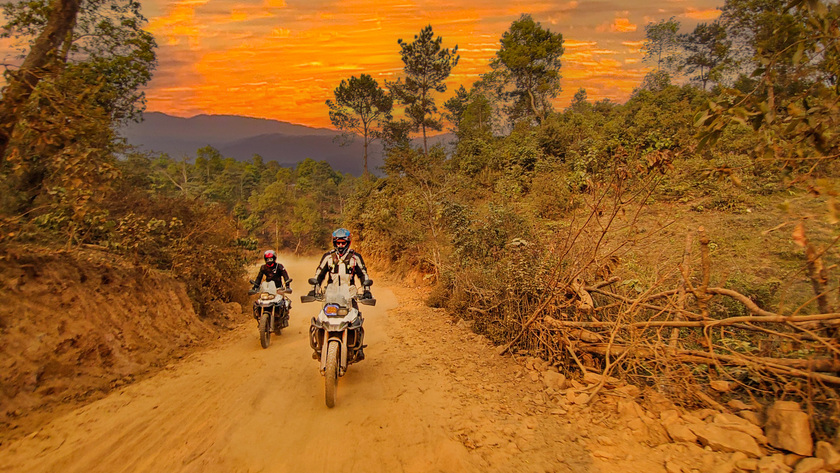
Experience motorbike touring to explore the majestic roads and landscapes of Dien Bien mountains and forests
Sharing with Travellive, Ant Travel - the first tourism unit in Dien Bien Phu province, Northwest Vietnam said: "Dien Bien also has a system of majestic caves that are kilometers long, many primeval forests with many waterfalls that even local people do not know about. But perhaps the most attractive point in Dien Bien besides history and majestic natural scenery is the diversity of ethnic minorities: Thai Den, Thai Trang, Kho Mu, H'Mong, Ha Nhi, La Hu, Si La, Lao, Xa Phang... because it is a remote place of the country, roads and infrastructure are limited, so Dien Bien still retains a very pure and pristine beauty and is not commercialized like Ha Giang, Lao Cai, Yen Bai or Cao Bang today".
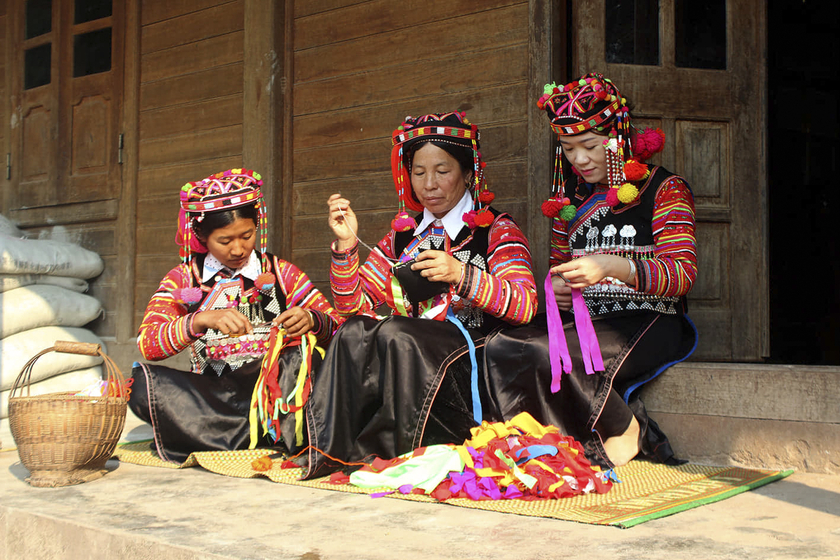
Ha Nhi women in traditional costumes sit embroidering objects.
Coming to Dien Bien from September to April every year, in addition to terraced fields, festivals, peach blossoms, apricot blossoms, dried sunflowers, and ban flowers, Dien Bien is always covered in a sea of clouds. You can find a way to escape from the clouds without having to go “hunting” like other places. The clouds appear from the night before and dissipate around 10am the next day.
Many people often say “Dien Bien has nothing interesting except historical sites” and the westernmost point of A Pa Chai is too far. But those who are lucky enough to explore the roads and villages in that so-called “monkey-coughing, stork-crying” place, or kayak, camp under the moonlight on the Da River, they truly feel lucky to have chosen Dien Bien.

Da River seen from above
What to experience in Dien Bien?
Dien Bien in particular or the Northwest in general (where the Thai people live), the first thing you cannot miss is the traditional cuisine of the Thai people: also grilled fish, but Pa Tinh Top of the Thai people is cut open from the back and then marinated with spices from the mountains and forests (mac khen seeds, local herbs) then grilled on charcoal... there is no better fish dish.
"Join in pounding and enjoying the H'Mong people's Banh Giay during Tet. More specifically, there are dishes that only the brave dare to try such as: Pa coi xom - jumping fish salad, nam pia - dipping sauce made from animal small intestines, mo ok - tadpole dish, or dishes made from insects... You also cannot miss the experience of sleeping in homestays in ethnic minority villages (H'Mong, Xa Phang, Dao, Thai, Ha Nhi...). You cannot miss a night of xoe with the mountain girls around a red fire and drinking 'giao boi' wine until midnight", said Ant Travel.
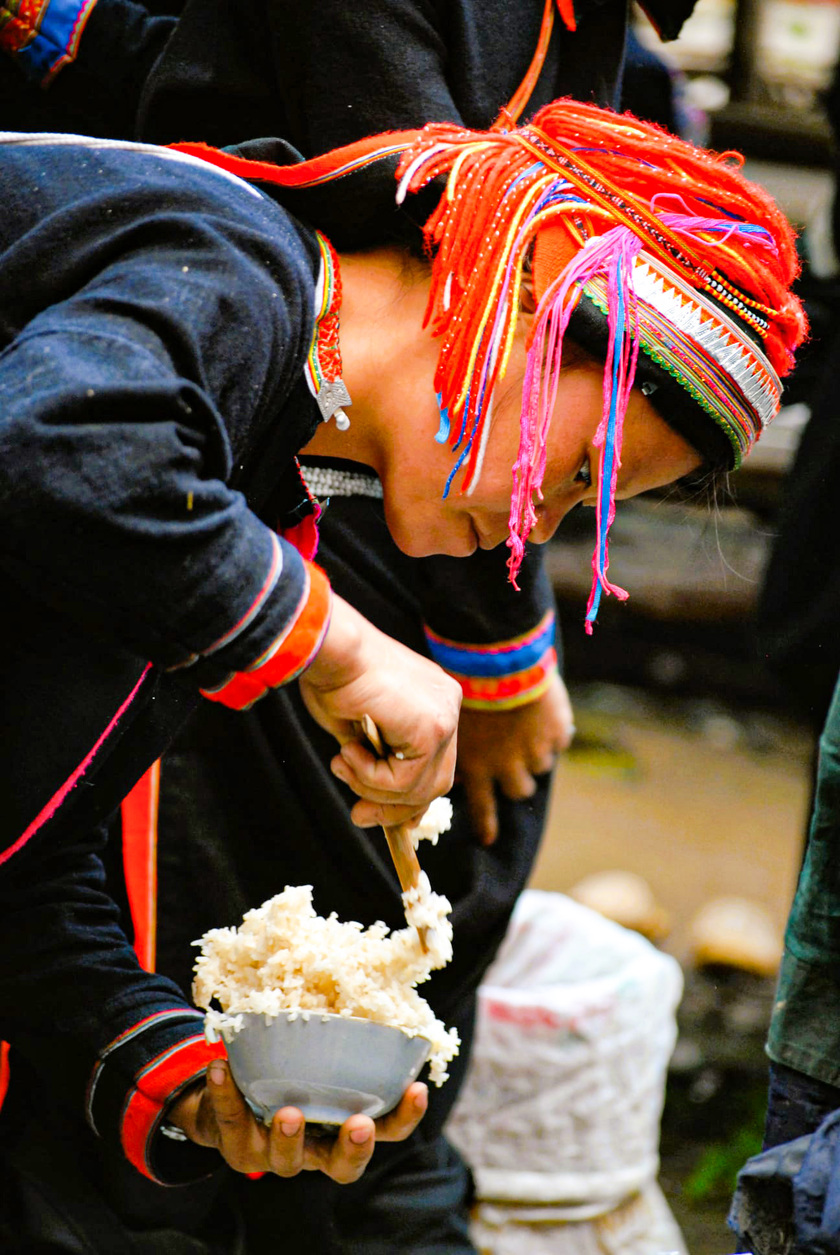
The beauty of the highlands
If you are a fan of exploration and experience, then the Da River - a paradise for kayaking, SUP in the area where the river is so narrow that "tigers and deer have jumped over" and camping in the middle of that majestic natural landscape on bright moonlit nights, there is probably nothing more wonderful.
When is the ideal time to visit Dien Bien?
Also in the Northwest region, Dien Bien has an extremely mild climate with many high mountains, so the summer is always cool (if in Dien Bien Phu city, the hottest day can reach 38 degrees Celsius). Most of the mountain villages from an altitude of 1,000 m or more have temperatures of only about 30 - 32 degrees Celsius, so you still have to wear a warm coat when going out at night. Winter is drier and more pleasant, the Northeast region or Sapa has Hoang Lien Son and Ta Lien Son ranges blocking the Northeast, so Dien Bien is quite warm. Spring here only has festivals and flowers, not the humidity like in the lowlands. Autumn in the Northwest is like a paradise.
The ideal time to visit Dien Bien is from September to the end of March: autumn scenery with ripe rice from late September to early October. Festivals with ethnic minority customs often take place from January to February (Hmong New Year from November 30th of the lunar calendar).

Sea of clouds
What to note when traveling to explore Dien Bien?
As a pioneering tour operator in Dien Bien, Ant Travel also emphasizes things to note when traveling in this land.
Dien Bien has a 455 km long border (414.712 km with Laos and the rest with China), so it is inevitable that there will be illegal drug trafficking. But one thing that everyone finds strange is that Dien Bien's security is extremely good, people can leave their motorbikes and cars on the street for a month and when they come back, the cars will still be there. So you can rest assured when participating in exploration and experience activities in remote areas.
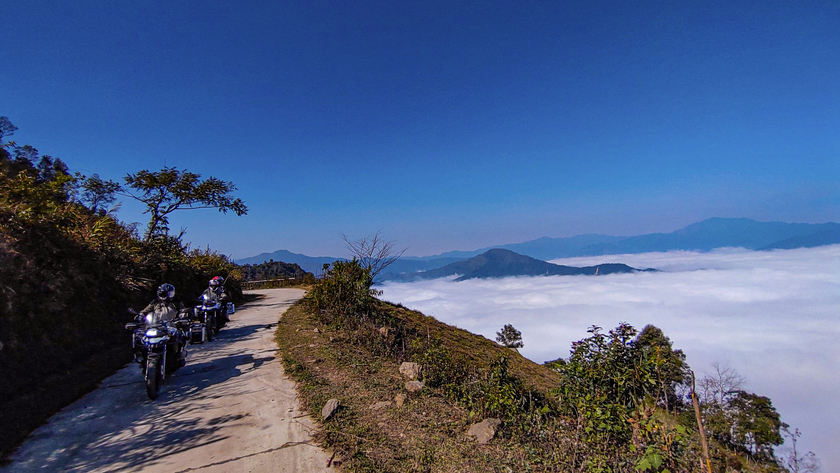
Join Ant Travel in driving motorbikes to explore and experience remote areas.
However, learn about the customs and taboos of the people to avoid being "extorted". For example, when a woman enters a Xa Phang house, you "absolutely" must not step through the main door but must step through the two side doors or the adjacent kitchen door. They believe that you will cause the buffalo or pig to go blind, or the corn or rice plants in the fields to get sick and die. At that time, you will have to buy pigs and chickens and invite a shaman to perform a ritual to worship the ghost and ward off bad luck for the villagers.
Dien Bien and Lai Chau are the two most remote provinces in the far west of the country, but currently Dien Bien Phu airport is being upgraded to be able to receive large jet aircraft as well as connect with many other destinations, so getting to Dien Bien/Lai Chau is extremely simple.
"Dien Bien is not as far away as people often say and there are many destinations to explore and experience besides historical sites or the westernmost A Pa Chai. Going to Dien Bien by bus from Hanoi is also more convenient and comfortable than going to Ha Giang or Cao Bang (because Hanoi - Dien Bien now has bus companies that are likened to private planes with 20 beds/bus. The buses usually depart from 7-9pm and after a night's sleep you will wake up in the middle of the Northwest mountains and forests at 6:30-7am the next morning)", Ant Travel said.

The beauty of Dien Bien every rice ripening season
Dien Bien has not yet developed its infrastructure, economic conditions are still limited (mostly still self-sufficient), so prices in Dien Bien seem to be higher than other destinations because the products are still full of "underarm" characteristics from the village (for example: chickens and pigs are raised for 8 months - 1 year before they can be eaten, so they cannot be compared with industrially raised chickens and pigs).
"Dien Bien is a destination for exploration and experience but not a place for relaxation. So if you are a fan of resort tourism, consider carefully before deciding to come to this mysterious land," Ant Travel added.






